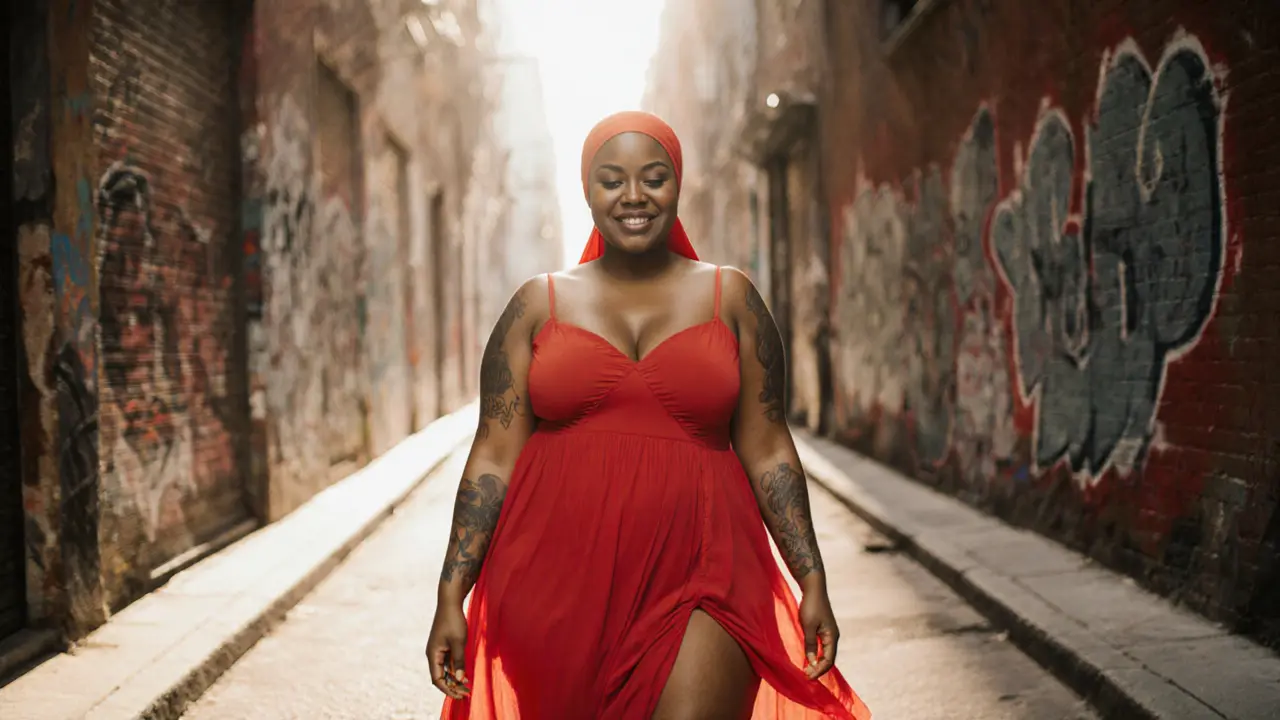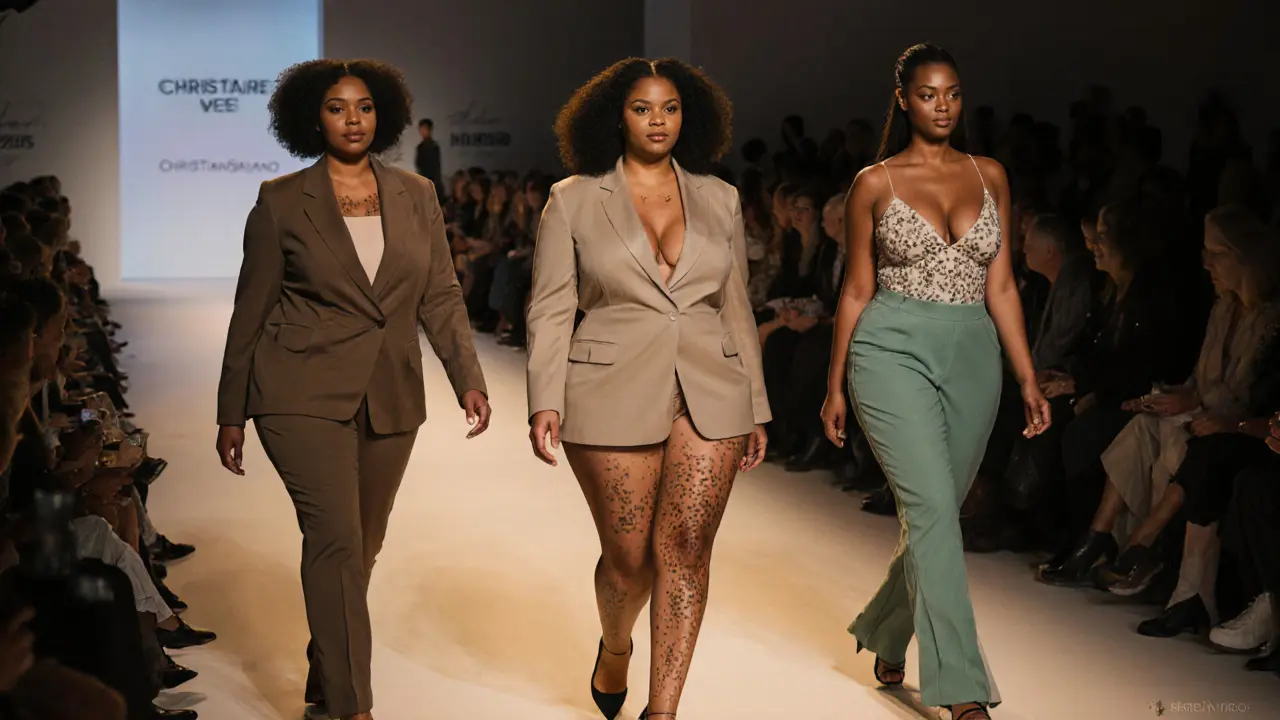Curvy Models - A Celebration of All Bodies
You’ve seen them on billboards, in magazines, scrolling past you on Instagram-women with curves, stretch marks, dimples, and confidence that doesn’t need filtering. These aren’t just models. They’re a movement. And they’re changing fashion, one runway at a time.
For decades, the fashion world told us there was only one kind of beautiful: thin. Tall. Narrow hips. Flat stomach. But guess what? Most of us don’t look like that. And that’s okay. In fact, it’s more than okay-it’s powerful. Curvy models aren’t a trend. They’re a correction.
What Exactly Is a Curvy Model?
A curvy model isn’t just someone who’s ‘bigger’ than a sample size. She’s a woman who wears sizes 12 and up, with a defined waist, fuller hips, thighs, and bust-and she’s not trying to hide it. Brands used to call these women ‘plus-size’ like it was a category separate from ‘real’ modeling. Now, they’re just called models. Full stop.
The industry standard used to be size 0-4. Today, top agencies like IMG, Ford, and DNA Model Management have dedicated curvy divisions. Brands like Savage X Fenty, Aerie, and Universal Standard don’t just feature curvy models-they build entire campaigns around them. These women aren’t tokens. They’re the face of real customers.
Take Ashley Graham. She was the first curvy model on the cover of Vogue in 2016. Since then, she’s walked for Victoria’s Secret, starred in Sports Illustrated, and launched her own clothing line. She didn’t wait for permission. She just showed up-and the world followed.
Why Curvy Models Matter
Think about the last time you looked in the mirror and felt uncomfortable in your own skin. Maybe it was because you saw a model who looked nothing like you. Maybe you thought, “That’s not me.” That’s the damage of narrow beauty standards.
Curvy models change that. They say: Your body isn’t wrong. It’s just different.
Studies show that when young girls see diverse body types in media, their self-esteem improves. A 2023 study from the University of Sydney found that exposure to curvy models reduced body dissatisfaction by 32% in teens compared to those who only saw thin models. That’s not just a feel-good stat-it’s a life-changing shift.
And it’s not just about looks. It’s about access. When brands start designing for curvy bodies, they’re not just selling clothes-they’re saying, “You belong here.”

Where You’ll See Curvy Models Today
You don’t have to look hard anymore. Curvy models are everywhere:
- Runways: New York Fashion Week now regularly features models sizes 12-22. Designers like Christian Siriano and Torrid have made inclusivity their signature.
- Magazines: Elle, Harper’s Bazaar, and Marie Claire all feature curvy covers regularly. In 2024, British Vogue dedicated its entire September issue to body diversity.
- Advertising: Target, H&M, and Amazon Fashion now include curvy models in 70%+ of their main campaigns. No more hiding them in small print.
- Social Media: Instagram is full of curvy influencers who aren’t waiting for brands to call them-they’re building empires themselves. @nabela_noor, @jessicamiranda_, and @michelle_kinsey have millions of followers who see themselves in their posts.
Even fast fashion is catching on. Zara launched its first inclusive line in 2023 with extended sizing and curvy mannequins in all major stores. No more separate “plus” sections tucked in the back corner.
How Curvy Modeling Is Different Now
It’s not just about size anymore. It’s about representation.
Today’s curvy models come in all shapes: some are tall, some are short. Some have tattoos. Some wear hijabs. Some use mobility aids. Some have scars from surgery. Some are Black, Latina, Indigenous, or Asian. This isn’t diversity as a checkbox-it’s reality.
Before, curvy models were often chosen because they still fit a “slimmed-down” ideal: small waist, big hips, no cellulite. Now? The goal is authenticity. A model might have a belly that jiggles when she walks. She might have stretch marks from pregnancy. She might be 5’1” with a 48-inch hip. And she’s still the most powerful person on the runway.
Brands are hiring real people-not airbrushed illusions. One campaign by Dove in 2024 featured 18 women, all sizes 10-24, with no retouching. The hashtag #RealBeauty got 2.1 billion impressions. People didn’t just watch-they shared. They cried. They tagged their sisters.

How to Support Curvy Models
You don’t need to be a model to be part of this change. Here’s how you can help:
- Buy from inclusive brands. Support companies that offer extended sizing and use diverse models. Your dollar speaks louder than your comment.
- Follow curvy creators. Like, share, and comment on their posts. Algorithms reward engagement. More visibility = more opportunities.
- Call out tokenism. If a brand uses one curvy model in a sea of thin ones? Say so. Social media accountability works.
- Don’t compliment bodies for being “inspiring.” Instead of saying, “You’re so brave for being that size,” say, “Your outfit looks amazing.” Focus on style, not survival.
- Shop your size. Stop waiting for “someday.” Wear what you love now. Confidence is contagious.
What’s Still Missing?
Progress isn’t perfect. Curvy models still earn less than their thinner counterparts. Only 15% of runway shows in 2025 featured models over size 14. Many still face pressure to lose weight for “high fashion” gigs. And some brands still use “curvy” as a marketing buzzword while offering only three extended sizes.
But the tide is turning. Young designers are graduating with inclusive sizing as standard. Retailers are ditching “plus” labels entirely. And more women than ever are refusing to shrink themselves-literally and figuratively-to fit someone else’s idea of beauty.
Final Thought: Your Body Is Not a Problem to Fix
Curvy models aren’t asking for pity. They’re not asking for permission. They’re asking for space. Space to be seen. Space to be celebrated. Space to exist without apology.
If you’ve ever felt too big, too much, too loud, too soft, too real-this is for you. You don’t need to change your body to be worthy. You don’t need to wait until you lose weight to wear that dress. You don’t need to be “inspiring” to deserve to be photographed.
The curvy models you see today? They’re not the exception. They’re the new normal. And you? You belong right there with them.
What size is considered curvy in modeling?
There’s no universal size, but in modeling, curvy typically means sizes 12 and up. Some agencies define it as 14-22, while others use body measurements like hip-to-waist ratios. The key isn’t the number-it’s that the model has a fuller, more rounded shape than the traditional runway standard.
Are curvy models paid less than thin models?
Historically, yes. But that gap is shrinking fast. Top curvy models like Ashley Graham and Lizzo have earned six-figure contracts. In 2024, industry reports showed that curvy models in major campaigns earned 85% of what thin models earned-up from 50% just five years ago. Pay equity is still a work in progress, but demand is pushing change.
Can anyone become a curvy model?
Yes-if you have confidence, personality, and the right look for the brand. Agencies don’t just look at size. They look at presence, how you carry yourself, your facial expressions, and your ability to connect with the camera. Many curvy models started as everyday women who posted photos online and got noticed. You don’t need a perfect body. You just need to own yours.
Why do some brands still avoid curvy models?
Some still cling to outdated ideas that bigger bodies won’t sell. Others fear alienating older customers. But data says otherwise: brands that include curvy models see 30-40% higher engagement and 20% higher sales. The resistance is fading as consumers vote with their wallets.
How can I find curvy fashion brands?
Start with brands known for inclusivity: Savage X Fenty, Aerie, Universal Standard, ELOQUII, and Girlfriend Collective. Apps like Size?! and Curvy Girl Style help you filter by size and body type. Instagram hashtags like #CurvyFashion and #SizeInclusiveStyle also lead to real people sharing honest reviews.





